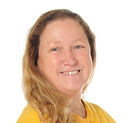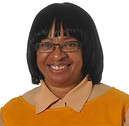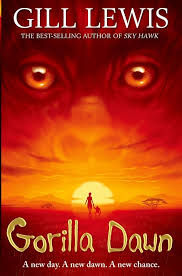

ST THOMAS
CE PRIMARY SCHOOL
.png)
YEAR 6









Well back to Autumn 2. We had a very busy, action packed Autumn 1 term and we hope you have all settled in and have enjoyed your first half term in Year 6. Autumn 2 will prove to be just as busy, so we hope you have re-charged your batteries over the holidays. We will be continuing with many of the projects started in Autumn 1, but we will be starting a new Art project - Trailblazers.
READING: We will start the half term continuing to read Gorilla Dawn by Gill Lewis as our storytime book. The children seem to be throughly enjoying the book so far, many looking forward to finding out what will happen to the main characters Bobo, Imara and the baby Gorilla. During our reading lessons, we are going to focus on smaller extracts, where we can delve deeper, gaining a more indepth underestanding of the text and the vocabulary used in context. Using 'Point, Point, Evidence' pupils will practice providing longer answers to gain 2/3 marks when answering inference questions. The first extract will be a speech written by an abolistionist and the second will be a short story, written by an enslaved African child.
WRITING: We will continue to work hard on letter formation and handwriting during morning work tasks. Our first written project will be a newspaper report. Pupils will put themselves into the shoes of a journalist in 1839, reporting on the Amistad Trail. We have already looked at the key features of a newspaper report, carried out some research on the trail itself, performed drama - considering the thoughts, emotions and actions of those involved and thought about eye-witness accounts that could have been taken from those watching the trail in the courtroom.
MATHS: In Maths we will start the half term by finishing the multiplication and division unit. We need to do a little more work on long division, before moving onto 1 and 2-step word problems. We will then move onto the first Year 6 fraction unit.



History/Maafa: This project teaches children about Africa past and present, with a particular focus on Benin. It traces the development of the slave trade and explores Britain’s role in the transatlantic slave trade, the causes and consequences of the European colonisation of Africa and the worldwide communities that make up the African diaspora.
Science/The Circulatory System:This project teaches children about the transport role of the human circulatory system, its main parts and primary functions. They learn about healthy lifestyle choices and the effects of harmful substances on the body.
Geography/Our Changing World:This essential skills and knowledge project revises the features of Earth, time zones and lines of latitude and longitude to pinpoint places on a map. Children find out more about map scales, grid references, contour lines and map symbols. They learn about climate change and the importance of global trade. Children analyse data and carry out fieldwork to find out about local road safety. They study patterns of human settlements and carry out an enquiry to describe local settlement patterns.
DT/Food for Life: This project teaches children about processed food and healthy food choices. They make bread and pasta sauces and learn about the benefits of whole foods. They plan and make meals as part of a healthy daily menu, and evaluate their completed products.
NEW: Art/Trailblazers: This project teaches children about significant black artists and their work, and provides opportunities to analyse and create artwork inspired by them.
NEW: Music: Classroom Jazz (2)
NEW: PE: Explore, Solve, Challenge.
NEW: Creating Media 3D Modelling: Planning, developing,and evaluating 3D computer models of physical objects.




